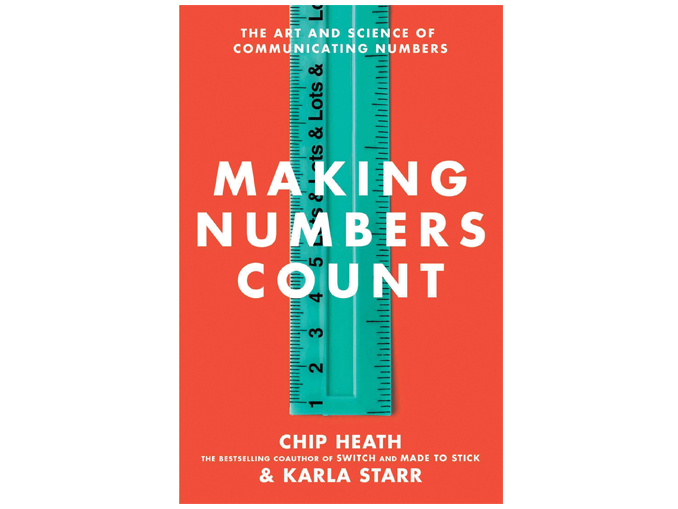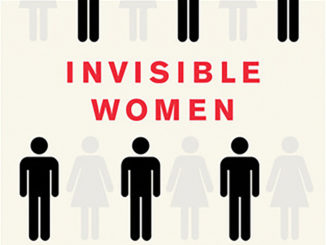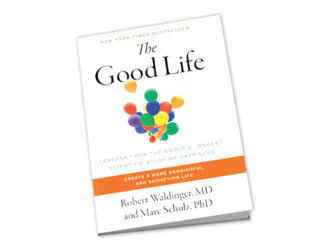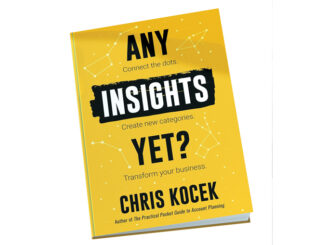Reviewed by Larry Praml, Owner, Praml Market Research, LLC, Minneapolis/St. Paul, Minnesota, larry@pramlmr.com
To describe the first image ever released from NASA’s James Webb Space Telescope recently, showing hundreds of galaxies of all shapes and sizes, NASA’s spokesperson tried to provide a sense of scale for what he shared. “If you held a grain of sand on the tip of your finger at arm’s length, that is the part of the universe that you’re seeing—just one little speck of the universe.”
While the image of hundreds of galaxies is itself remarkable, the scale is what’s more amazing—and more difficult to fathom. Some estimate there are two trillion galaxies in the universe. But that is just a number. The spokesperson’s description of the photo of hundreds of galaxies representing merely a grain of sand at arm’s length helps provide a sense of what that number really means in terms that we can understand.
The art (and science) of communicating numbers like these is the essence of Making Numbers Count. The authors, Chip Heath and Karla Starr, observe that important information is often lost when we aren’t able to translate numbers into human experiences. It is a quick read (135 pages, not including appendix and endnotes) with lots of interesting examples of “translating” numbers to put them in perspective for your audience.
The authors are by no means intimidated by numbers—Heath is a professor at the Stanford Graduate School of Business, and Starr is a member of the National Association of Science Writers. Far from being “number-phobic,” they are professional communicators who recognize that, for most people, trying to process complex numbers often gets in the way of understanding what they should take away from them.
The first few sections of the book are essential reading for communicating quantitative results. The book starts by sharing best practices for translating complex numbers into easier to understand language. For instance, instead of saying that 79.4 percent agree, simplify by saying that four out of five agree. Why make people wrestle with the fact that 54 percent of people prefer brand A compared to 46 percent who prefer brand B when you can simply say the majority choose A over B?
Beyond these simple lessons, the book focuses on framing numbers to give them more impact. This includes providing scale, context, or implications that most can visualize through common experiences. It’s full of examples to help audiences understand the meaning behind the numbers we use.
For example:
Reciting a number: A single M&M has four calories.
Making the number count: In order to burn off the calories in a single M&M, you’d have to walk two flights of stairs.
AND
Reciting a number: The amount of meat recommended as part of a healthy meal is three to four ounces.
Making the number count: The amount of meat recommended as part of a healthy meal is three to four ounces, which looks about the same size as a deck of cards.
The authors explain that Heath spends one of his business classes challenging students to come up with ways to make numbers really stick with their intended audience. When he first introduced the class, students would come up with complex analogies that frequently made the numbers even harder to understand or made them less impactful. Ironically, as the book went on, some of the “translations” were more complex than they needed to be. When describing Jeff Bezos’ $198 billion net worth, the author took three paragraphs and introduced 10 other numbers to communicate its scale. That’s okay for storytelling or when giving a lecture, but it’s a long time to hold someone’s attention in conversation, and it’s a lot of added information to try to make a single number stick.
But outside of a few hit-or-miss translations, the book is a quick read with easy-to-adopt concepts and some excellent examples that can help readers think about how to frame numbers, so they carry more weight for their audiences.
This book is based on a simple observation: we lose information when we don’t translate numbers into instinctive human experience… We believe you can use the principles of psychology to help people understand and act on a number. That requires translation.
—Book Reviewer




